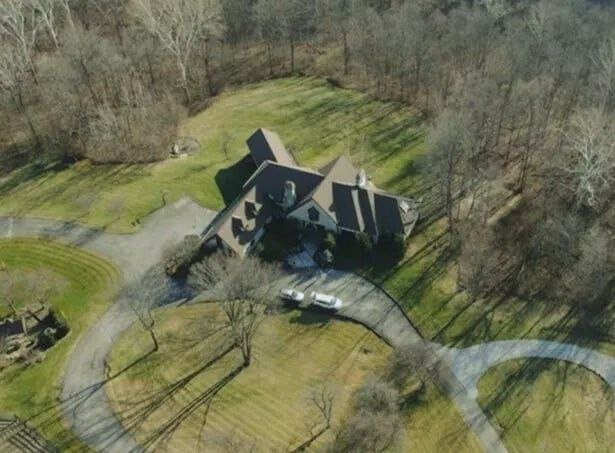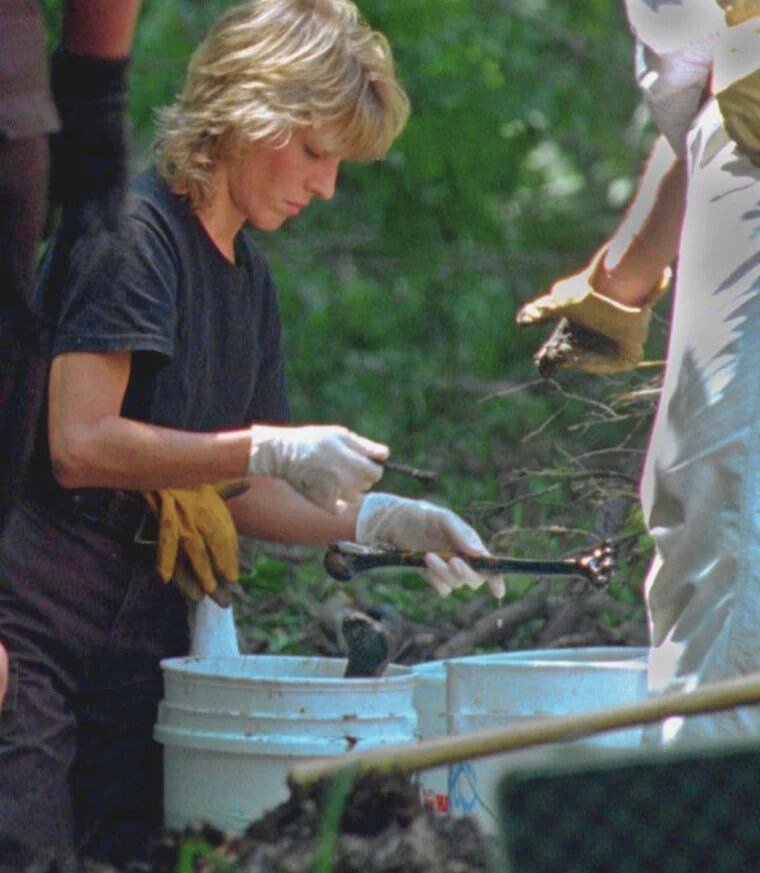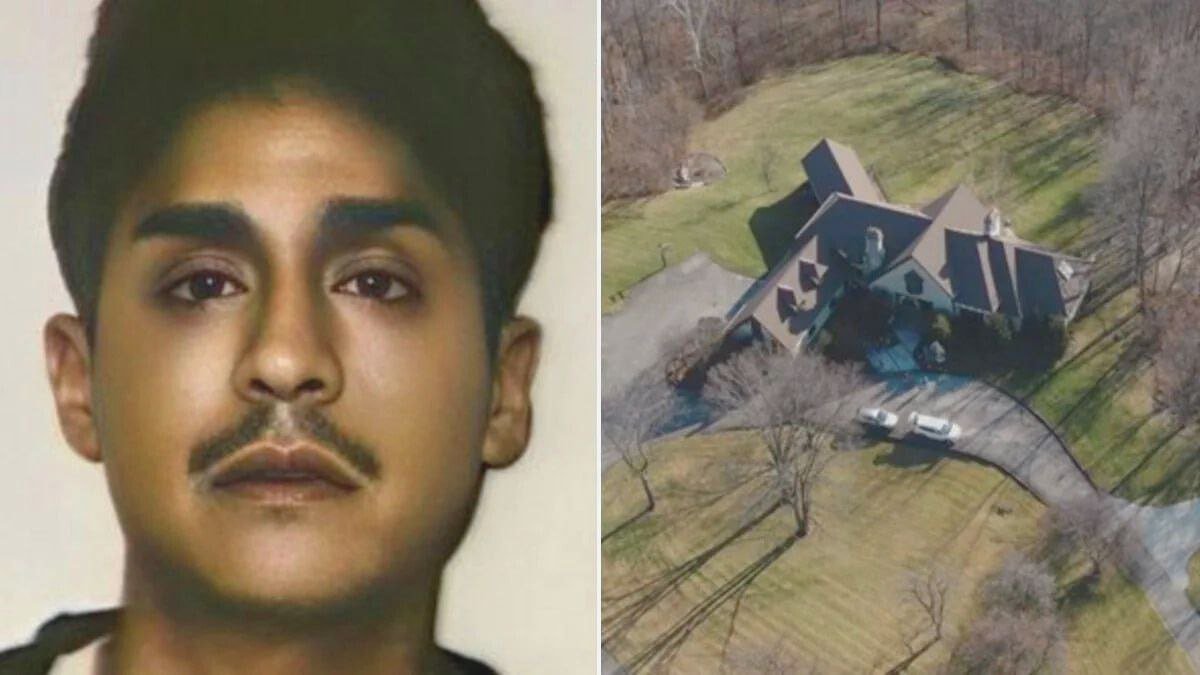Contents

Introduction to the Enigmatic Estate
The 18-acre estate in Indiana stands as a grim monument in the annals of criminal history. This sprawling property, once the tranquil residence of an unsuspecting community, has now gained notoriety due to its dark past. Its eerie history is compounded by the chilling discovery of approximately 10,000 human remains, making it one of the most significant sites in forensic investigations.
Classified as a crime scene of substantial importance, the estate has captured the attention of both law enforcement and historians. The property’s relevance extends beyond mere curiosity; it serves as a critical piece in understanding the psyche and operational methods of one of Indiana’s most infamous serial killers. The macabre findings unearthed from this site have not only provided closure to countless cold cases but have also spurred advancements in forensic science.
The estate’s haunting legacy is further emphasized by its physical and atmospheric attributes. Dense woods and overgrown paths now shroud the area in an almost palpable sense of foreboding. Many who visit or study the estate report a lingering sense of dread, as if the grounds themselves retain the echoes of the past atrocities committed there. This unsettling atmosphere has solidified the estate’s place in local lore, attracting a myriad of researchers, journalists, and even paranormal investigators.

As we delve deeper into the history and significance of this enigmatic estate, it is essential to understand the broader implications of the discoveries made here. The sheer scale of human remains found underscores the need for continued investigation and remembrance. This estate is more than just a crime scene; it is a stark reminder of the human capacity for both evil and the relentless pursuit of justice.
The enigmatic figure at the center of this chilling narrative is Herbert Richard Baumeister, a name that has become synonymous with terror in Indiana. Born in 1947, Baumeister’s early life appeared unremarkable, yet beneath the surface lurked a dark and disturbed mind. He exhibited troubling behaviors from a young age, which only intensified over time. His modus operandi was both calculated and sinister, targeting young men who frequented gay bars in Indianapolis. Baumeister would lure his victims to his secluded estate under the guise of companionship, only to subject them to a grim fate.
Baumeister’s psychological profile paints the portrait of a deeply disturbed individual. He displayed traits consistent with antisocial personality disorder, including a lack of empathy, manipulativeness, and a propensity for deceit. These characteristics enabled him to blend into society while harboring his macabre predilections. His criminal activities spanned over a decade, with the most notorious period occurring in the late 1980s and early 1990s. During this time, several young men disappeared under mysterious circumstances, their fates unknown until the grim discovery at Baumeister’s estate.
Among the infamous cases linked to Baumeister is the disappearance of Roger Goodlet in 1994. Goodlet’s vanishing was a turning point in the investigation, leading to the eventual discovery of numerous human remains on Baumeister’s property. The 18-acre estate, known as Fox Hollow Farm, became a focal point of horror as authorities unearthed the skeletal remains of at least eleven men. The discoveries at Fox Hollow Farm not only shocked the local community but also drew national attention, casting a spotlight on the horrifying extent of Baumeister’s crimes.
Baumeister’s reign of terror ultimately came to an end in 1996 when he fled to Ontario, Canada, following increased scrutiny from law enforcement. Cornered and unable to evade capture, he took his own life, leaving behind a legacy of unanswered questions and unrelenting fear. The haunting legacy of Herbert Baumeister lingers, with Fox Hollow Farm standing as a somber reminder of the lives lost and the darkness that once resided within its confines.

Discovery of the Human Remains
The shocking discovery of over 10,000 human remains on the 18-acre estate of the Indiana serial killer sent ripples through the community and beyond. The initial investigation began after a tip-off led law enforcement officers to the secluded property. As the investigation progressed, it became evident that the site was a grim repository of the serial killer’s heinous acts.
Law enforcement officers, equipped with advanced forensic tools, meticulously scoured the sprawling estate. The remains were found in various states of decomposition, scattered across different locations on the property. The extensive nature of the site required a coordinated effort among local, state, and federal agencies. Cadaver dogs played a crucial role in pinpointing the locations of the remains, while ground-penetrating radar helped identify buried bodies.

The discovery of such a large number of human remains was unprecedented and left both law enforcement and the public in a state of shock. The grim findings attracted significant media attention, and the public’s reaction ranged from disbelief to outrage. Vigils and memorials were swiftly organized to honor the victims, while authorities vowed to bring the perpetrator to justice.
Forensic experts employed a range of techniques to identify the remains. DNA analysis played a pivotal role, allowing for the comparison of genetic material from the remains with databases of missing persons. Dental records and skeletal analysis were also utilized to provide additional information that could aid in the identification process. Each piece of evidence was meticulously cataloged, and the painstaking work of building a comprehensive profile for each victim began.
As the investigation unfolded, the sheer scale of the tragedy became apparent. The discovery of the human remains not only highlighted the depravity of the serial killer but also underscored the importance of forensic science in solving complex criminal cases. The dedication and expertise of the forensic teams brought a sense of closure to many families who had long awaited answers about their missing loved ones.
The Investigation: Unraveling the Mystery
The investigation into the 18-acre estate of the Indiana serial killer presented law enforcement with an intricate and harrowing task. From the outset, authorities were confronted with the daunting challenge of sifting through a vast amount of evidence spread across the extensive property. The discovery of numerous remains scattered throughout the estate necessitated meticulous forensic work, with investigators tirelessly working to identify each victim and establish a timeline of events.
One of the primary difficulties faced by the investigative team was the sheer volume of remains, which complicated efforts to link the victims conclusively to the killer. The extensive decomposition of many bodies added to the complexity, requiring advanced forensic techniques such as DNA analysis and dental record comparison. These processes, while essential, were time-consuming and demanded significant resources and expertise.

A crucial breakthrough in the investigation occurred with the identification of a distinctive pattern in the remains. This pattern, coupled with detailed behavioral analysis, enabled authorities to narrow down their suspect list and focus their efforts on specific individuals. Another pivotal moment came with the discovery of personal belongings and evidence directly connected to the victims within the estate’s confines. These items provided critical links that helped corroborate the involvement of the suspected killer.
Collaboration among various agencies, including local law enforcement, forensic experts, and federal authorities, played a vital role in advancing the investigation. Each agency brought unique skills and perspectives, facilitating a comprehensive approach to unraveling the mystery. The combined efforts of these dedicated professionals ultimately led to the piecing together of a chilling narrative that explained how the killer operated and managed to elude capture for so long.
The investigation into the 18-acre estate remains a testament to the perseverance and tenacity of law enforcement in facing one of the most complex and macabre cases in Indiana’s history. Despite the myriad challenges, the relentless pursuit of justice for the victims underscored the unwavering commitment of the authorities involved.
The Estate: A Closer Look
Nestled in the serene countryside of Indiana, the 18-acre estate once owned by the notorious serial killer now stands as a haunting testament to his dark legacy. Located approximately 30 miles north of Indianapolis, this property is encircled by dense woodlands, providing an unsettling sense of seclusion. The geographical isolation of the estate has often been cited as a factor that allowed the killer to carry out his heinous acts undetected for so long.

The estate itself is a sprawling expanse of land that features a variety of terrains, including rolling hills, densely forested areas, and open fields. A long, winding driveway leads to the main residence, a dilapidated mansion that has fallen into significant disrepair. The mansion, once a grand symbol of opulence, now exhibits cracked windows, peeling paint, and overgrown vegetation, all contributing to its eerie atmosphere.
Several outbuildings are scattered across the property, including a large barn, a guesthouse, and what appears to be a storage shed. Each structure contributes to the chilling narrative of the estate. It is within these buildings and the surrounding land that numerous remains were unearthed, each discovery further unraveling the grim history tied to this estate.
Significant areas where remains were found include the dense woods at the northern edge of the property and a shallow, makeshift graveyard situated in a secluded clearing. These sites have been meticulously documented by forensic teams, transforming the estate into a macabre landmark of investigative interest.
The current state of the estate is a stark contrast to its former grandeur. Although nature has begun to reclaim the property, the haunting legacy of its past remains palpable. The mansion and its surroundings serve as a somber reminder of the atrocities committed, leaving an indelible mark on both the land and the community.
The Legal and Ethical Dilemmas
The 18-acre estate of the Indiana serial killer is embroiled in a myriad of legal and ethical dilemmas. Central to this controversy is the classification status of the property and the human remains discovered there. Legally, the site has been designated as both a crime scene and a historical landmark, creating a complex web of regulatory oversight. This dual classification raises critical questions about the management and preservation of the site.
For the victims’ families, the estate represents a haunting reminder of their loved ones’ tragic fates. Ethical considerations dictate that their needs and wishes should be prioritized. Providing a respectful and dignified handling of the remains is paramount, yet balancing this with the public’s right to historical knowledge presents a challenge. Families often advocate for private memorials, while historians and the public push for transparent access to the site for educational purposes.
Moreover, the broader community faces its own set of implications. The presence of such a notorious location can affect local property values, community reputation, and even tourism. Some argue that the site should be preserved as a solemn reminder of the past, contributing to public awareness and historical education. Others contend that the estate should be completely redeveloped to erase the painful memories associated with it.
Debates about public access versus private mourning further complicate the issue. Public access proponents believe that opening the estate for tours and educational programs can serve as a sobering lesson on the dark aspects of human nature. Conversely, opponents argue that this could lead to exploitation and sensationalism, disrespecting the memory of the victims.
Historical preservation also plays a significant role in this debate. The estate holds artifacts and evidence that are invaluable to understanding the case and its broader social implications. Preservationists argue that these elements should be maintained for future study, while others believe that the site should be left undisturbed to honor the victims’ final resting place.
Impact on the Community
The revelation of the 18-acre estate, tied to the activities of an Indiana serial killer, sent shockwaves through the local community. Residents were thrust into a maelstrom of emotional and psychological turmoil, grappling with the proximity of such heinous crimes to their homes. The sense of security, once taken for granted, was irreparably shaken, leaving many to confront a newfound vulnerability.
Psychologically, the community experienced a spectrum of reactions. Fear and anxiety became palpable, as the knowledge of a serial killer operating within their midst instilled a pervasive sense of dread. The emotional aftermath was marked by collective mourning, especially as details of the victims’ lives and tragic endings came to light. Support groups and counseling services emerged as essential resources, providing much-needed spaces for residents to process their grief and trauma.
In response to the atrocities uncovered, local policies underwent significant revisions. Law enforcement agencies intensified efforts to bolster safety measures, implementing more robust surveillance and community policing initiatives. There was a marked increase in public awareness campaigns, aimed at educating residents on personal safety and crime prevention. These measures, though reactive, fostered a renewed commitment to vigilance within the community.
The community also rallied to honor the victims, ensuring their memories were preserved and respected. Memorials were established, serving as poignant reminders of the lives lost and the enduring impact of the tragedy. These spaces became focal points for collective healing, offering a place for reflection and solidarity. Community events, such as vigils and fundraisers, were organized to support the families of the victims and to advocate for broader societal changes to prevent future tragedies.
Ultimately, the discovery of the 18-acre estate left an indelible mark on the community. It catalyzed a transformation in attitudes towards safety and crime prevention, fostering a more vigilant and united populace. The legacy of the victims, enshrined through memorials and community initiatives, continues to underscore the resilience and strength of the community in the face of unimaginable horror.
The 18-acre estate, once the chilling backdrop to a series of heinous crimes, remains a focal point for both investigators and curious onlookers. Despite the passage of time, the property continues to evoke a sense of dread and fascination. Ongoing investigations strive to uncover any remaining secrets that the estate might hold. Law enforcement officials periodically revisit the site, armed with advanced forensic technology in hopes of discovering new evidence that could shed further light on the extent of the killer’s activities.
Various theories have emerged regarding the true scope of the crimes committed on this eerie estate. Some experts speculate that the number of victims could be higher than initially thought, suggesting that the killer might have been active for a longer period than the documented timeline. These theories are fueled by anecdotal evidence and the occasional discovery of suspicious artifacts on the property. Moreover, local folklore often embellishes these speculations, adding layers of mystery to the already grim narrative.
Recent developments have also stirred interest in the estate. A team of independent researchers has been granted limited access to the property. Their goal is to employ ground-penetrating radar and other non-invasive methods to investigate areas that have remained unexplored. This effort aims to either confirm or debunk the numerous theories surrounding the possible existence of undiscovered burial sites. The findings of this research could potentially lead to a renewed criminal investigation.
Looking ahead, there are tentative plans to transform the estate into a memorial site. This initiative aims to honor the victims while providing a space for reflection and education about the impact of such tragic events. However, this proposal is met with mixed reactions from the local community and the families involved. Some advocate for preserving the estate’s historical significance, while others argue that it should be left undisturbed to allow the past to rest.
OUR SITE: toinewsalert.com
Chad Daybell Sentenced to Death for Killing Three Family Members:
Chad Daybell Sentenced to Death for Killing Three Family Members
Robert Pickton, 74, a Canadian Serial Killer, Passes Away Following Prison Attack
Robert Pickton, 74, a Canadian Serial Killer, Passes Away Following Prison Attack
